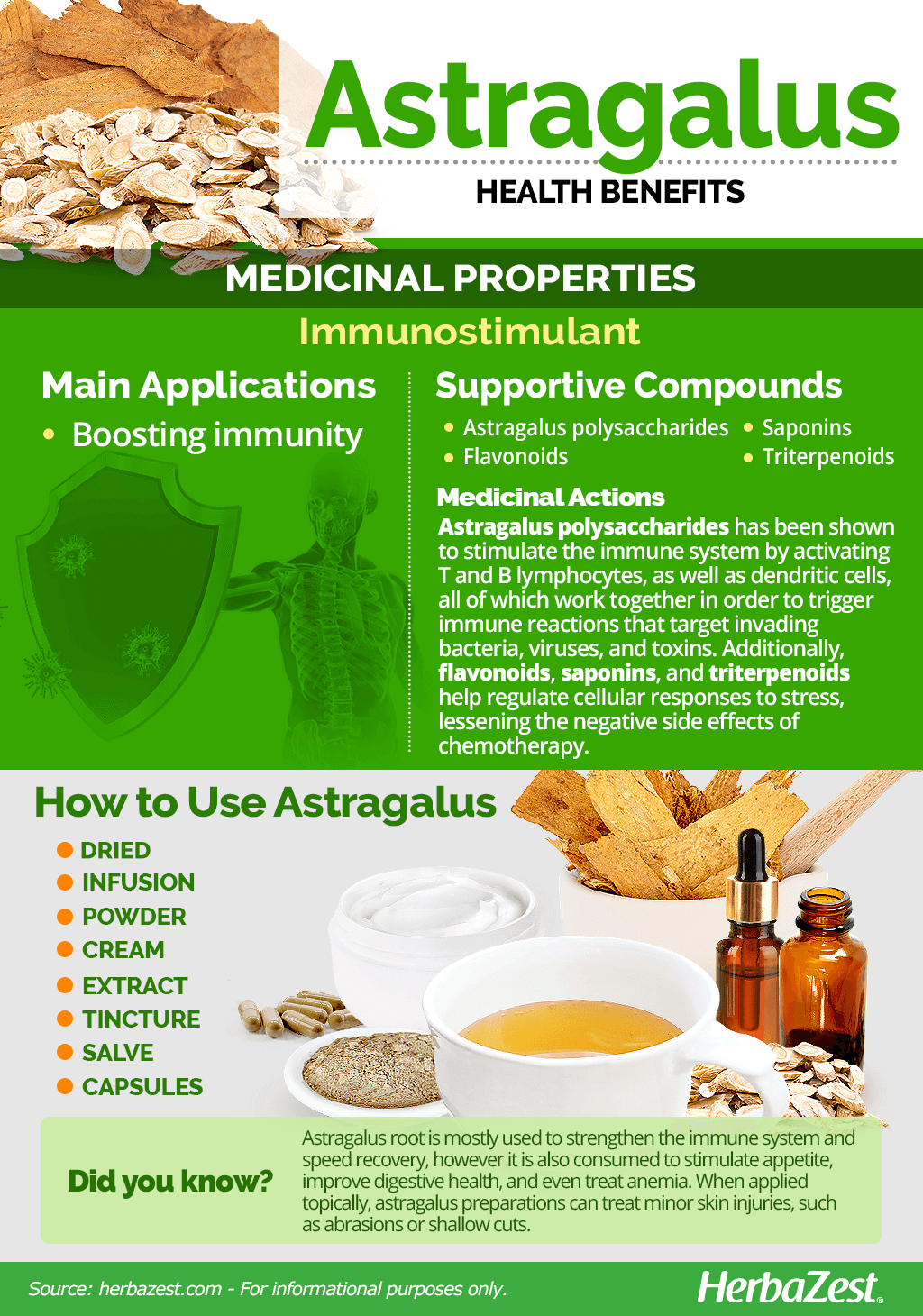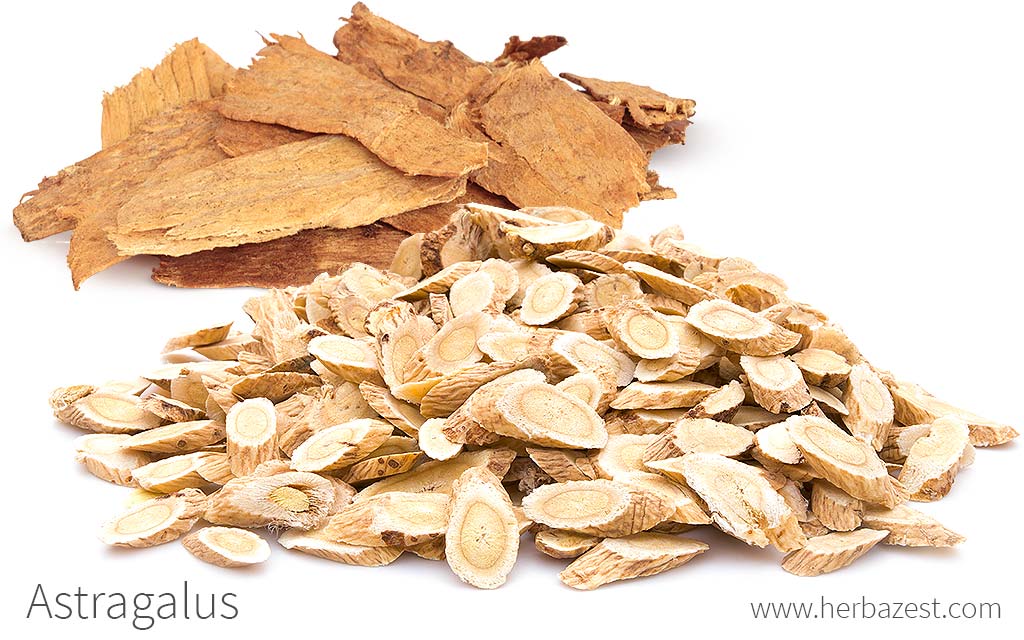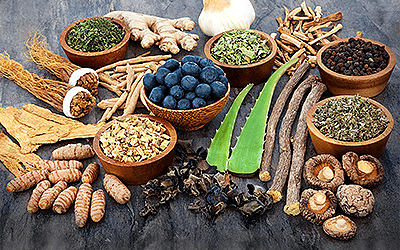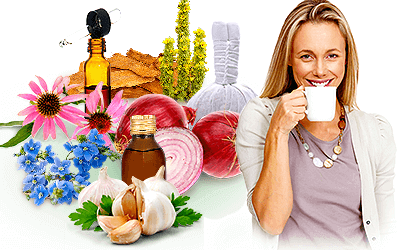Astragalus has a long history of use by the tenets of Traditional Chinese Medicine (TCM) although it remains largely unfamiliar to the Western world. Astragalus has traditionally been thought to improve wei qi or chi, which means "life force" or "energy flow". Its popularity spread to have many different uses throughout the country's history, but it was not the subject of scientific study or even commercial use until the 1980s. Nowadays, conventional medicine is interested in astragalus potential applications, while its traditional uses remain as strong as ever.
Astragalus Medicinal Properties
Health Benefits of Astragalus
Astragalus has been an important feature in CTM, as well as in Greek-Arab (Unani) and even Western folk medicine, and it upholds numerous traditional uses. Because of its deep-seated use in traditional medicine, it is one of the most well researched immune system stimulant herbs. Due to its immunostimulant properties, one of the most popular astragalus benefits is:
Boosting immunity. The immunostimulant properties of astragalus not only help treat and prevent viral and bacterial infections, but also allow for quick recovery. Moreover, studies have found that astragalus can potentially lessen the negative side effects of chemotherapy by strengthening immunity.
In ancient China, astragalus root was used for strengthening the immune system, a practice known as strengthening qi (chi), and certain Native American tribes, such as the Lakotas, grinded up the roots and used it to relieve chronic pain.
In addition, the astragalus properties may help with:
Lowering the risk of metabolic syndrome. Astragalus root has been shown to regulate a number of markers for metabolic syndrome, including high blood pressure, blood sugar, insulin resistance, and body fat, all of which can lead to cardiovascular disease, stroke, and diabetes.
Treating anemia. Astragalus can improve digestive health, which in turn stimulates appetite, which may help treat anemia, but further studies are needed to support this claim.
Sanitizing skin wounds. When applied topically, astragalus is thought to treat minor wounds, such as burns, sunburns, cuts, and skin abrasions through its antibacterial properties.
How It Works
Most astragalus health benefits are believed to come from astragalus polysaccharides (APSs), which have been shown to activate the immune system by enhancing the transformation of T lymphocytes (a sub-type of white blood cells, crucial in the regulation of immune responses), as well as the activation of B lymphocytes (which produce antibodies that are used to attack invading bacteria, viruses, and toxins) and dendritic cells, which trigger immune reactions to toxins.
Astragalus-based treatments have been shown to effectively reduce the toxicity induced by drugs commonly used for immune disorders and chemotherapy.
Other chemical compounds that give astragalus root its substantive medicinal properties include flavonoids, saponins, several minor isoflavonoids, and other biogenic amines, all of which have a positive effect on managing stress and stimulating the immune system. Astragalus also contains triterpenoids, which may contribute to ameliorate the negative side effects of chemotherapy.
All astragalus constituents, particularly flavonoids, exert significant cellular antioxidant effects. They appear to enhance cell-mediated immunity by stimulating the activity of macrophages, responsible for killing potentially harmful cells.
Additionally, astragalus contains sucrose and saponin, as well as high concentrations of amino acids, selenium, zinc, copper, and vitamin B9 (folate).
Other herbs with remarkable abilities for warding off infectious diseases are cabbage, echinacea, goji berry, and tea plant.
Astragalus Side Effects
Astragalus is safe for most adults to consume orally, as well as apply topically. Very little is known about its potential side effects, since it is often combined with other herbs when used medicinally. Other species from of the Astragalus genus have been found to possess trace amounts of a neurotoxin called swainsonine. However, no such evidence has emerged so far regarding Astragalus membranaceus, which is the species most used for medicinal purposes.
Cautions
Those who take immunosuppressant medications should use caution when taking astragalus, since it can negatively interact with them.
Individuals who suffer from diabetes or need to regularly monitor their blood sugar levels should exercise caution when taking astragalus, since it can lower blood sugar levels.
Astragalus can inhibit the body's ability to expel lithium, allowing accumulation of this chemical in the system. Those who are taking lithium medication should consult with a physician before taking astragalus.
Women who are pregnant or breastfeeding should consult a physician before taking astragalus.
- Medicinal action Immunostimulant
- Key constituents Astragalus polysaccharides, flavonoids, saponins, and triterpenoids
- Ways to use Capsules, Hot infusions/tisanes, Tincture, Powder, Ointment, Dried
- Medicinal rating (1) Very minor uses
- Safety ranking Use with caution
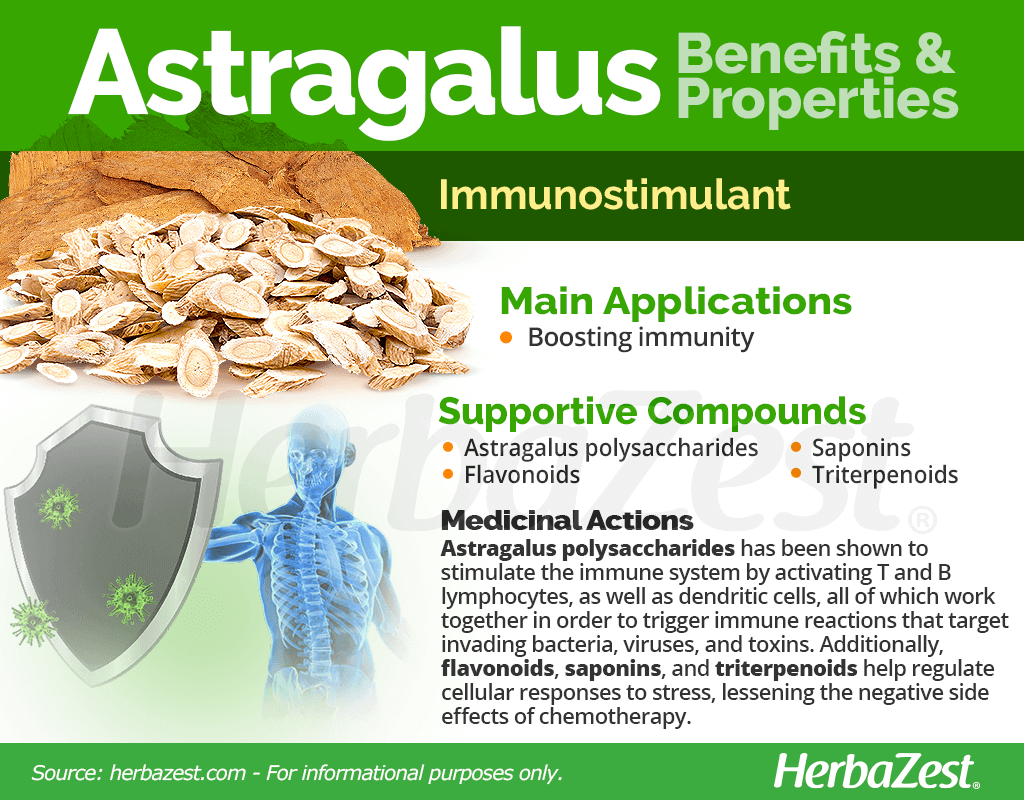
How to Consume Astragalus
The most significant part of the herb is its extensive root system, which is the part that is dried and prepared medicinally. The most effective way of obtaining astragalus health benefits from is in its numerous medicinal forms of consumption, where the properties of the plant are more concentrated.
Natural Forms
Dried. Astragalus dried root is typically ground up and used medicinally. It is consumed to strengthen the immune system and speed recovery.
Infusion. When brewed into a hot tea, astragalus root have numerous health benefits, including stimulating appetite and improving digestive health.
Powder. Astragalus root powder, which can be added to smoothies or other liquids can be consumed to treat anemia.
Herbal Remedies & Supplements
Cream. When applied topically, astragalus cream can soothe sunburns and other minor skin injuries, such as bruises and contusions.
Extract. In this medicinal form, astragalus can stimulate the immune system, even lessening the negative side effects associated with chemotherapy.
Tincture. When macerated in a neutral alcohol, astragalus is transformed into a concentrated solution, which can be taken diluted in water to strengthen immune system and cardiovascular function.
Salve. When applied topically, astragalus ointments can treat minor wounds, such as abrasions or shallow cuts due to its antibacterial properties.
Capsules. This is one of the most common medicinal forms of astragalus. Capsules stimulate appetite, as well as lower the risk of metabolic syndrome due to its numerous flavonoids.
- Edible parts Root
- Taste Mildly bitter
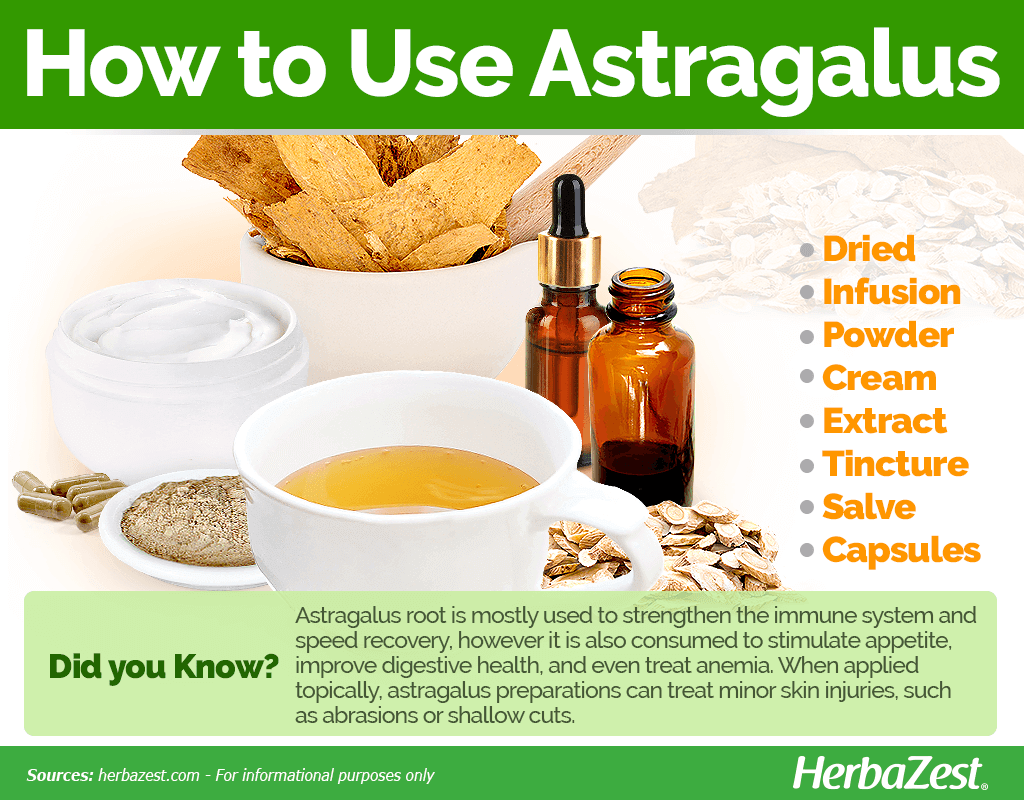
Growing
Not commonly ornamental, astragalus has relatively rigid growth requirements. Many gardeners, however, find it well worth the trouble to grow: just like all other legumes, astragalus has the ability to promote nitrogen fixation in the soil, thus enhancing its natural fertility. For tips on how to help this plant thrive, follow the growing guidelines below:
Growing Guidelines
As a perennial flowering plant, it can handle temporary frost, but ideal temperatures should hover around 70°F (21°C).
Astragalus seeds require a 21-day cold period of stratification to promote germination, followed by mild scarification with fine-grade sandpaper.
Astragalus prefers sandy, alkaline soils.
It is best to avoid transplanting whenever possible, because the roots are very fragile until the plant has reached four to five years of growth.
It takes at least two years of growth before it can be harvested for medicinal purposes.
It can grow in partial shade to full sun, but full sun will help produce a sprout within 7 - 30 days.
Water astragalus moderately.
- Life cycle Perennial
- Harvested parts Roots
- Light requirements Full sun, Partial shade
- Soil Light (sandy), Well-drained
- Soil pH 7.9 – 8.4 (Moderately alkaline)
- Growing habitat Temperate climates
- Pre-germination seed treatment Scarification
- Growing time Four to five years
Additional Information
Plant Biology
Scientifically known as Astragalus membranaceus (also A. propinquuss), astragalus stands an average of 16 - 36 inches (33 - 91 cm) tall and features several pairs of opposing leaflets down the length of its hairy stems. The primary root is thick and long with many lateral roots. The secondary root system begins 8 - 12 inches (20 - 30 cm) below the soil surface and can attain 60 inches (150 cm) in width. Rhizobium nodules develop on the upper portions of the roots near the soil surface. Astragalus's flowers, when in bloom, range from yellow to purple in color, and it produces fleshy seedpods instead of fruit.
Classification
Astragalus membranaceus is a member of the Fabaceae family, which comprises about 17,000 species across 700 genera, including economically important crops such as alfalfa (Medicago sativa), beans (Phaseolus vulgaris), fenugreek (Trigonella foenum-graecum), soy (Glycine max), and tamarind (Tamarindus Indica).
Varieties and Subspecies of Astragalus
With over 3,000 species, Astragalus genus is one of the largest known. However, it is not a common ornamental plant, and is not widespread throughout the world. There are few varieties and no subspecies to speak of that differ from the original. It is often, however, confused with other members of its genus, most notably with tragacanth (Astragalus tragacanthus), a Middle Eastern legume used to make a natural gum.
Historical Information
Considered one of the important Qi' tonifying or immune stimulant herbs, astragalus has been integral for CTM since 200 BCE and is thought to be one of the oldest plants used medicinally.
It was prescribed for balancing the immune system in cases of general debility and chronic illness. It was used to strengthen vitality in the immune system. In ancient China, this practice was known as strengthening Qi (pronounced chee), the body's life force and protective energy.
The Chinese name for astragalus is Huang Qi, which translates to yellow leader, referring to its yellow roots and its status as one of the most important tonic herbs.
Economic Data
Though astragalus is still lesser known outside of Asia, the internal market for the herb is quite robust - China's economic demand for the plant topped one million tons in 2008 and was set to increase in future years. Deforestation has made it an expensive commodity, and that same year only saw a yield of 500,000 - 600,000 tons, signaling a need to find new ways to increase production and repopulation efforts.
Other Uses of Astragalus
Environmental. In the wild, astragalus is a food source for insects and other herbivorous wildlife.
Veterinary medicine. Research has recently found that astragalus can help improve dogs' suppressed immune systems.
Sources
- PLOS ONE, Effects of Astragalus Polysaccharide on Immune Responses of Porcine PBMC Stimulated with PRRSV or CSFV, 2012
- The American Journal of Chinese Medicine, Astragalus membranaceus: A Review of its Protection Against Inflammation and Gastrointestinal Cancers, 2016
- The Official Government Website of JiLin Province, Compound Astragalus Polysaccharide Health Food Development Project of Yanji City
- NCCAM Herbs at a Glance, Astragalus: Science and Safety
- American Cancer Society, Astragalus
- University of Maryland Medical Center, Astragalus
- Advances in New Crops, Introduction of Chia and Gum Tragacanth in the U.S
- Prescription for Nutritional Healing
